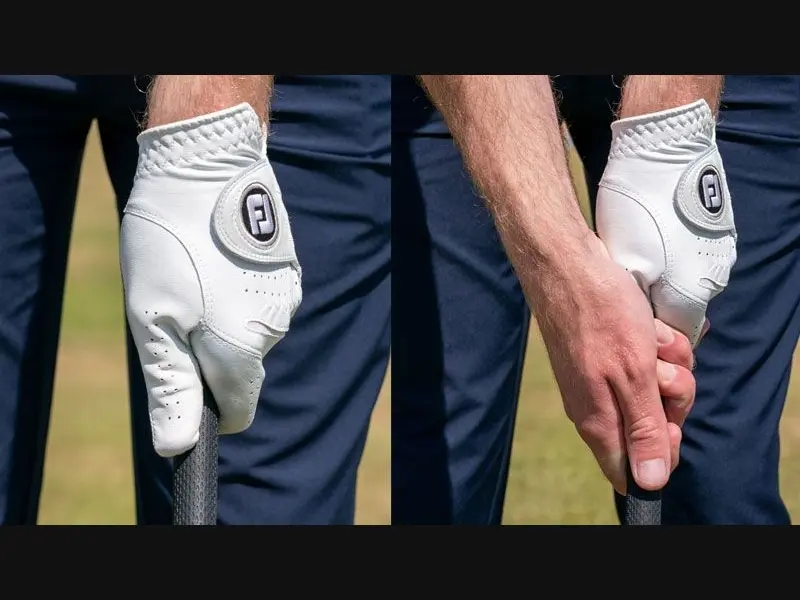
A seemingly small detail, the golf grip is often overlooked by amateur golfers.
Daniel Guest,Community Contributor
However, it is the foundation of every golf swing, impacting direction, power, and consistency. Without a proper grip, even the most technically sound swing can go awry.
Why is the Grip So Crucial?
- Control: The grip determines the clubface's position at impact, directly affecting the ball's trajectory. A faulty grip can lead to slices, hooks, or weak shots.
- Power: A proper grip allows for the efficient transfer of energy from the body to the club and then to the ball. A weak grip can result in a loss of power.
- Consistency: A consistent grip promotes a repeatable swing, leading to more consistent shots.
Types of Grips
There are three main types of golf grips:
The Overlapping Grip (Vardon Grip): The most popular grip, where the pinky finger of the trailing hand overlaps the index finger of the leading hand.
- The Interlocking Grip: Similar to the overlapping grip, but the pinky and index fingers interlock.
- The Ten-Finger Grip (Baseball Grip): All ten fingers are placed on the club, often used by beginners or players with smaller hands.
The best grip for you depends on your hand size, strength, and personal preference. It's essential to experiment with different grips and consult a golf professional to find the one that suits you best.
Tips for a Proper Grip
- Grip Pressure: Hold the club firmly but not too tightly. Imagine holding a bird – firm enough that it doesn't escape but gentle enough that you don't hurt it.
- Hand Placement: The "V" formed by your thumb and index finger of both hands should point towards your back shoulder.
- Neutral Grip: The clubface should be square to the target line when you address the ball.
Common Grip Mistakes
- Weak Grip: The "V's" point too far to the left (for right-handed players). This can lead to slices and a loss of power.
- Strong Grip: The "V's" point too far to the right. This can cause hooks.
- Overactive Hands: Excessive hand action can disrupt the swing and lead to inconsistent shots.
Mastering the Grip
Developing a proper grip takes time and practice. Spend time on the driving range or practice greens focusing on your grip and how it feels. Incorporate grip drills into your practice routine and seek guidance from a golf professional. Remember, a good grip is not just about the hands; it involves the entire body.
Conclusion
The golf grip is the foundation upon which your swing is built. Investing time and effort in mastering the grip will pay off with improved control, power, and consistency in your game. Remember, a proper grip is not a one-size-fits-all solution. Experiment with different grips and seek professional guidance to find the one that best suits you. With a solid grip, you'll be well on your way to unlocking your full potential on the golf course.
This is Golf as You've Always Imagined!
Daniel is a PXG Staff Pro and the Head of Golf Instruction at IMAGEN Golf the area's leading golf instruction and advisory firm, host of the IMAGINE Golf Differently podcast and Best-Selling Author of "Unleash The Golfer Within".
For more information visit www.ImagenGolf.com or call 215-595-6299 Reach out to Daniel directly at:Daniel@ImagenGolf.com
For free golf tips and more listen to The IMAGINE Golf Differently Podcast on Spotify, Apple Podcast or wherever you get your podcasts and follow us:
Instagram @ Imagengolf
Twitter @imagengolf
Facebook Imagengolf
TikTok @ GolfBetterGuaranteed
Youtube ImagenGolf

